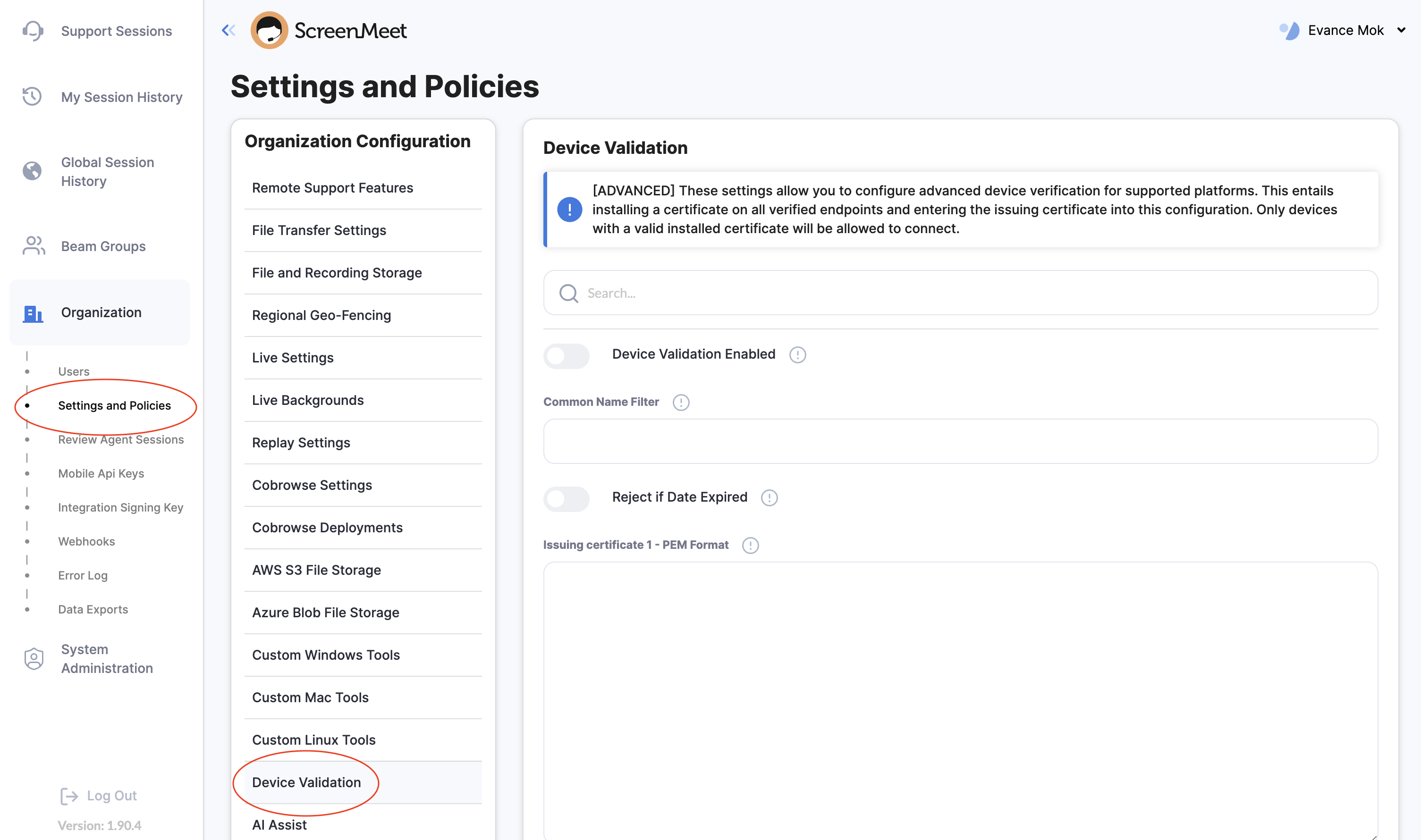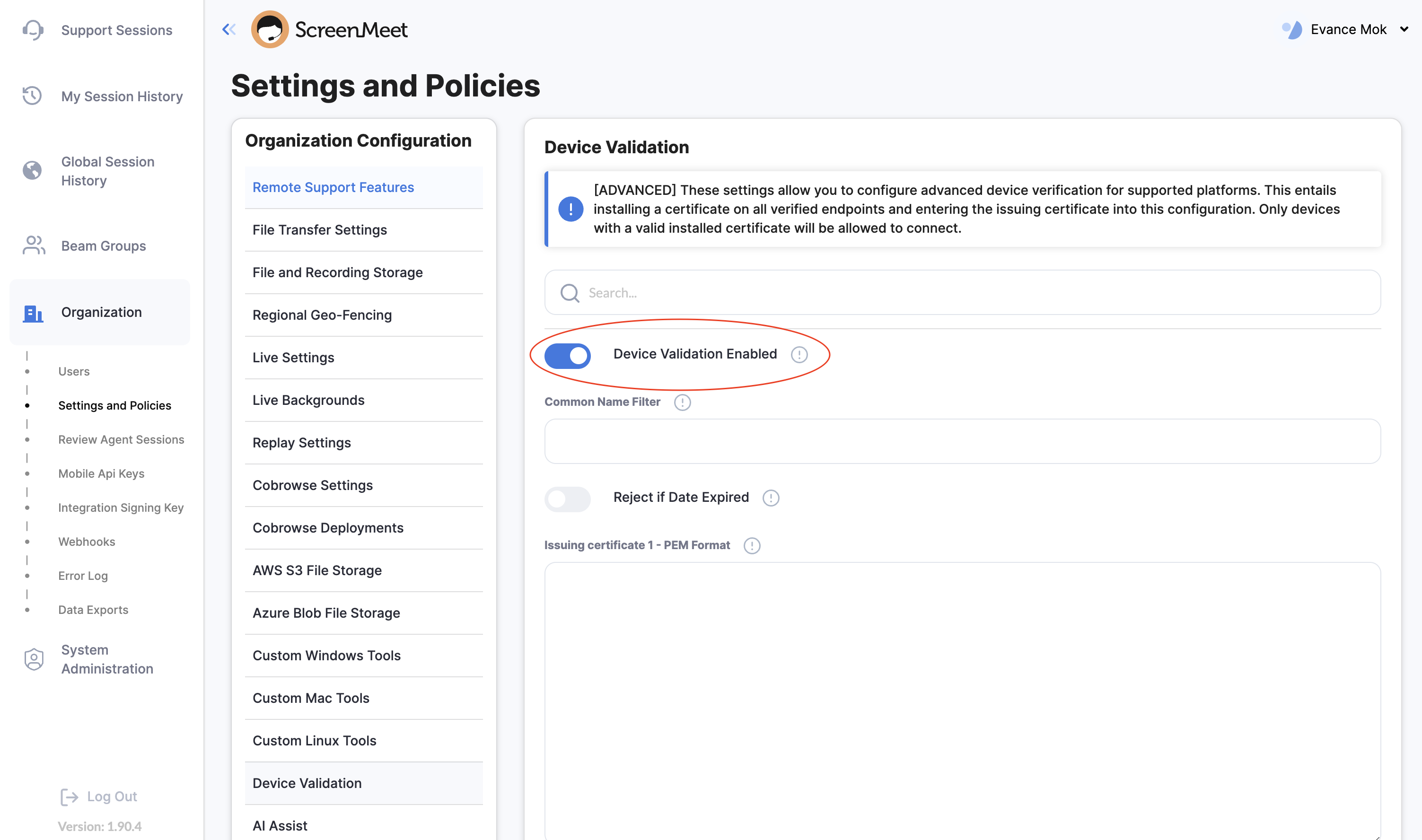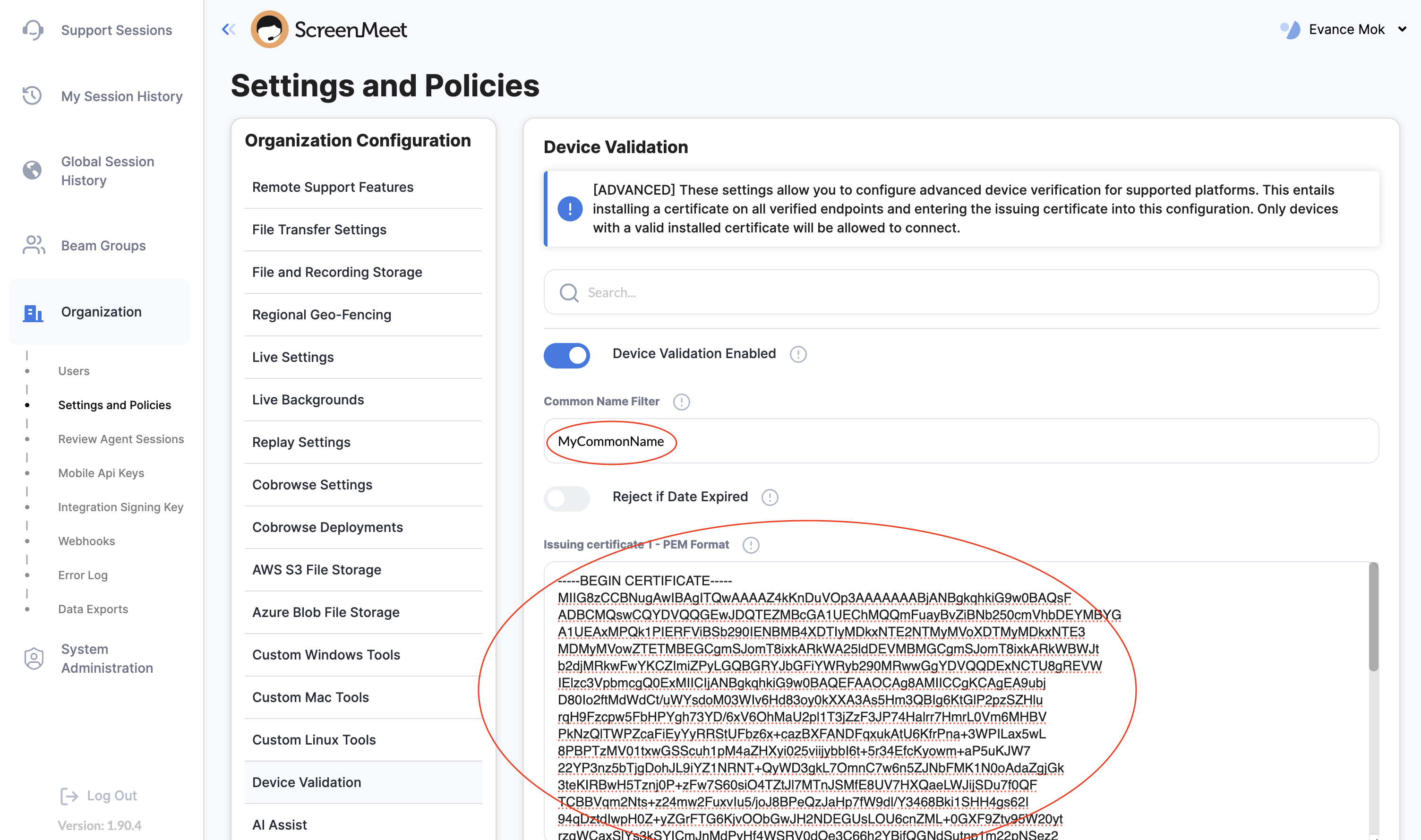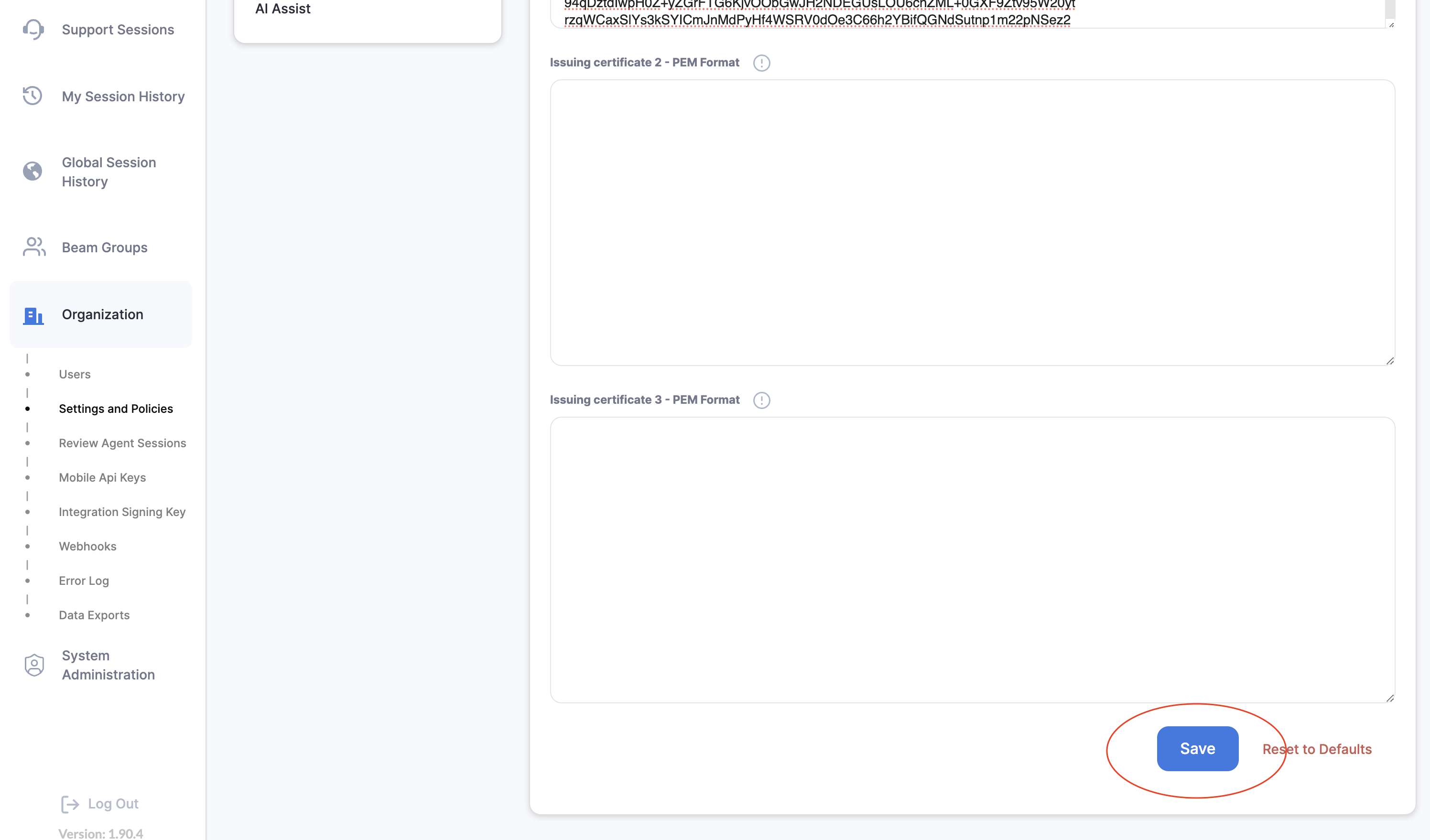- 03 Oct 2025
- 2 Minutes to read
- Print
- DarkLight
- PDF
Certificate-Based Device Validation (Windows-only)
- Updated on 03 Oct 2025
- 2 Minutes to read
- Print
- DarkLight
- PDF
This article provides information on using certificates to ensure only approved Windows devices can connect to ScreenMeet Remote Support.
What is Certificate-Based Device Validation?
This is an enhanced security feature built into our ScreenMeet Remote Support Client for Windows. When enabled, this feature will cause the service to reject any incoming requests from endpoints without the appropriate certificate installed, thus preventing any unmanaged Windows clients from connecting to your organization's ScreenMeet Remote Support services.
When should you use Certificate-Based Device Validation?
If you would like to restrict access to your ScreenMeet Remote Support service to specific Windows endpoints that are managed by your organization. These are typically endpoints managed by an MDM solution that can install/manage certificates on the endpoints.
How to configure Certificate-Based Device Validation
Issue and install certificates on managed devices that should be allowed to connect to the ScreenMeet Remote Support service (This is typically done by your IT Administrator)
Decide on a Issuer Common Name to use for the certificate. This is the name that will be:
specified in the issuing certificate (pem)
encoded in the certificate (p7b) as part of the Issuer name during issuance
configured in the ScreenMeet Portal as a filter to be used during certificate validation
Issue the device certificates for your managed devices
Using your trusted issuing certificate (
pem), issue the device certificates for your managed devices. This is typically done by your IT organization
Install the certificates on your managed devices
This is typically done by your IT organization through an MDM tool. If doing this manually, follow the steps below:
Distribute the device certificates (
p7b) to your managed devicesOpen the
p7bfile to open the certificate containerLocate the actual device certificate for installation
Double-click on the actual device certificate
Click the
Install Certificate...button to open the install wizardSelect the option for installing for the
Local MachineClick the
InstallbuttonLet the wizard automatically select which certificate store and click the
FinishbuttonYou should see a dialog specifying that
The import was successful
Verify the certificate is installed on your device
Note
The location where your certificates are installed on your device may differ from this example. Please contact your IT Administrator to verify your certificate installations if needed.
For this functionality to work properly in escalated scenarios, the certificate needs to be installed for the local machine and NOT just for the local user.
On your Windows device, open the certificate manager by searching for the tool
Manage Computer Certificates, opening this tool should open a window showing theCertificates - Local ComputerNavigate to
Other People-->Certificatesto see the default location where these certificates are installedConfirm that your certificate is installed in the listing
Enable this feature this in the ScreenMeet Portal
Login to console.screenmeet.com as an administrator
Navigate to
Organization-->Settings and Policies-->Device Validation

Enable the
Device Validation Enabledtoggle

Enter the
Common Name Filteryou have selectedPaste the issuing certificate contents into the
Issuing certificate 1 - PEM Formatfield

Click the
Savebutton to save your configuration

Error Codes
If validation fails during a connection from a managed device, the end-user will receive one of the following error codes:
Code | Meaning |
|---|---|
4043 | The device certificate was not properly installed. A fitting certificate was not found on the device. |
4044 | The certificate is either malformed or invalid. |
.png)
